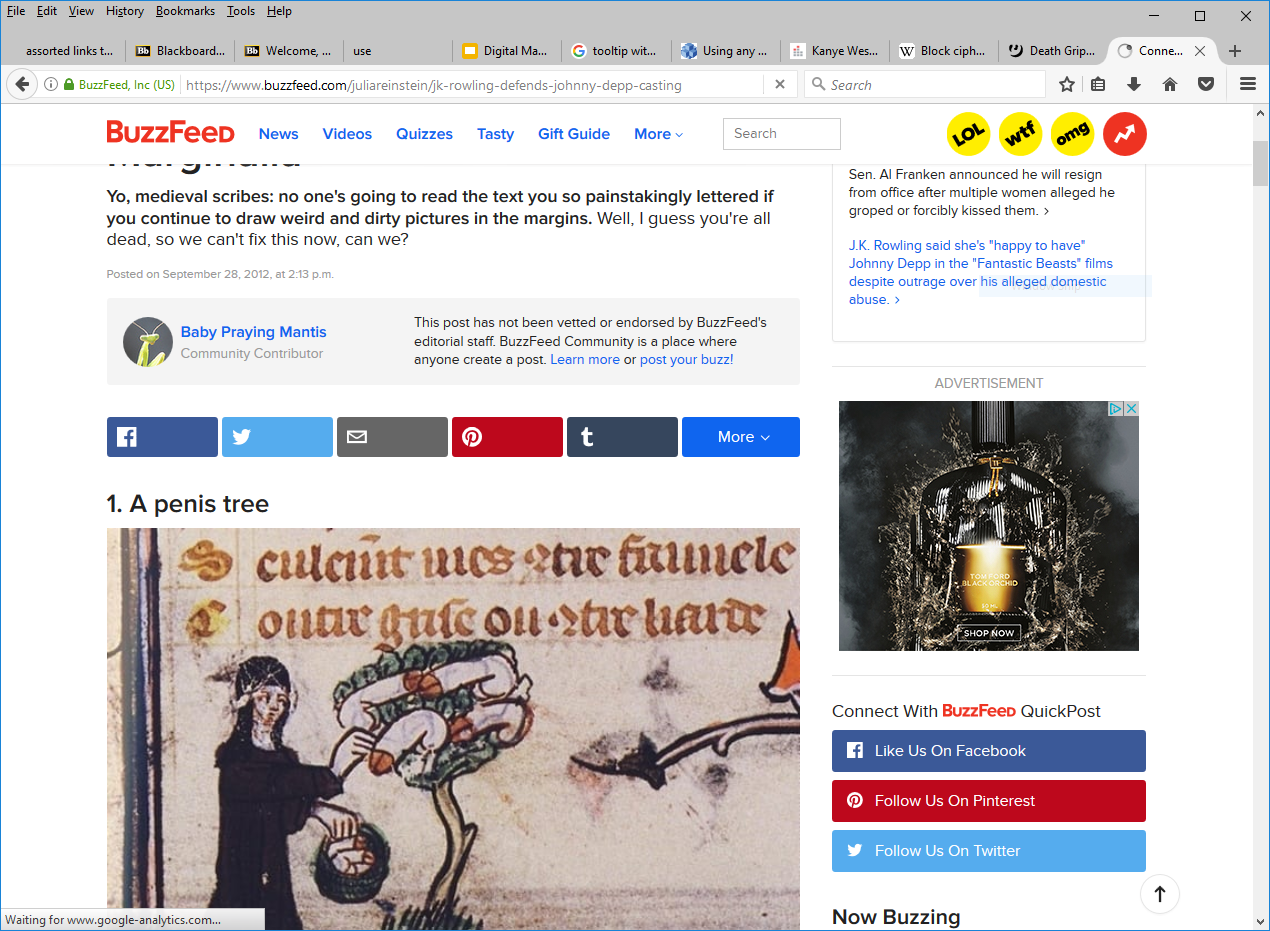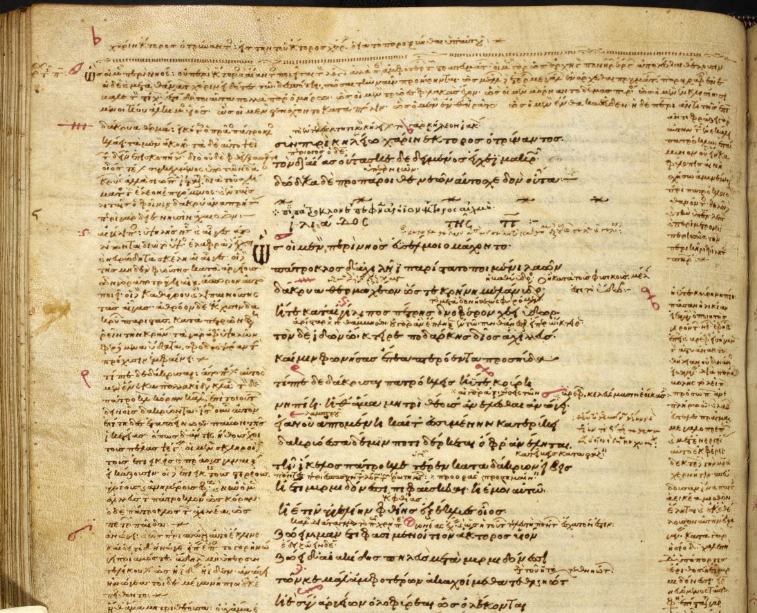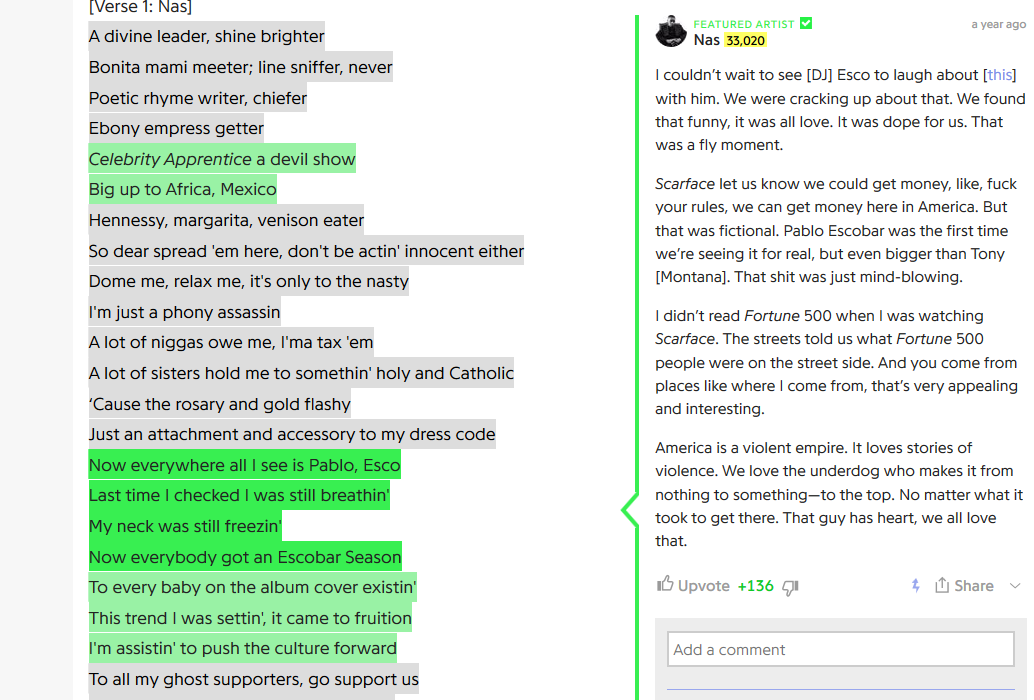Layout

(Screenshot of this BuzzFeed article)
In Medieval manuscripts, the pages represent distinct modes of production and organization of information. The transition away from scrolls brought new challenges in assembling written works. Pages in a manuscript (and in printed books) came in groups called signatures, where sheets were stacked on top of each other and then folded in half along the spine1. This means that on a single sheet, one might have pages 8 and 25 appear next to each other on the same sheet, which means that in order to properly copy a book, a scribe would need to carefully plan where to write each page.
Moving beyond the text and into the page, many manuscripts give us a rich ecosystem of content: we have marginal images depicting elements that play with and against the text in non-obvious ways, large and richly decorated letters, paratext that provides broader structure to the document, and various forms of commentary2.
Some digital artifacts share these same qualities. I have personally received several PDFs that came with software-added highlighting and commentary. Webpages embody these traits in obvious ways: as we can see in the image above, along with the main content of the BuzzFeed article, we have links along the top which expose the user to the structure of BuzzFeed, we have links to marginally related articles in the margins, we have a small blurb depicting the author, and, of course, we have advertisements.


(via British Library Burney MS 86 (Townley Homer) at http://www.bl.uk/manuscripts/FullDisplay.aspx?ref=Burney_MS_86, and the track "Nas Album Done" on Genius at https://genius.com/10165162)
Layout also has significant consequence for the type of content in both manuscripts and digital objects. We have here a page from the Townley Homer, which centrally features Homer's Iliad along with extensive commentary both in the margins and between lines. We also have a page from Genius, which is a site which centrally features lyrics to songs, and has extensive commentary on many lines of each song. Here, one of the comments comes from the person who wrote the featured song.